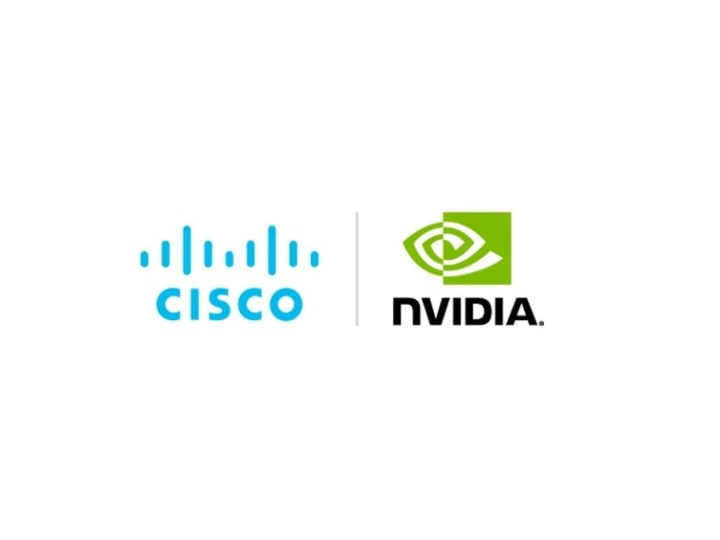This content was produced in partnership with Cisco.
With so many working from home these days, it’s important to have an infrastructure in place that allows for the seamless transition between remote and office locations. One way to solve this is to pull all of the data and applications that are resident on a person’s laptop and have the data instead be resident on a system architecture within the customer’s data center. That enables the centralized management of applications, data, and system backups. Patches and updates to the apps can then be prioritized. So, VDI provides the ability for a laptop or home computer to be able to access the required data and applications within a consistent user interface. An additional benefit is that if the company laptop is stolen, a new one can be sent to the employee and they can access their virtual desktop and be productive immediately. A smart way to approach the datacenter infrastructure for VDI is to leverage cloud computing — more specifically Cisco’s future-ready UCS X-Series Modular Systems, for converged and hyper-converged infrastructure.
Cisco’s Virtual Desktop Infrastructure (VDI) solutions for X-Series provides a remarkably flexible, scalable, and capable provisioning and management tool for an organization or business that needs it. But here’s the most important point: It’s not just for work-from-home situations. The technology offers a widespread and scalable rollout for just about any form of implementation for any industry. IT organizations benefit from all of the technology X-Series has to offer, including high server performance, 100G networking, Nvidia GPU support on both the server compute node and via a dedicated node, comprehensive management tools, within fully scalable chassis. And since it’s future-ready and modular, upgrades and streamlined performance are always accessible — you don’t have to worry about upgrading all of your hardware to keep up with performance and software improvements.
Let’s take a closer look at what Cisco’s VDI infrastructure truly has to offer, and how NVIDIA’s latest and greatest solutions plays a role.
Keeping it simple, virtually and otherwise

There is a wide range of job roles across a number of vertical markets that VDI can address. One type of user is called the “Power User,” and it’s a job role where they work with applications that generate very complex renderings. The work requires greater amounts of memory and Intel CPU processing cycles to complete, which impacts the overall system performance — thus they are a high-power user. One way to ease power burdens is to add NVIDIA GPUs to the configuration. A Graphical Processor Unit (GPU) can perform the application renderings, removing the burden from the CPU inside the server. Of course, this offers many benefits to performance and the user experience.
Cisco’s technology delivers a future-ready infrastructure prepared for just about anything, with a remarkably simple operating model — organizations benefit from simple configuration, easy deployment and implementation, managed from Cisco Intersight.The result is an ideal platform on which leading VDI “broker” solutions from Citrix and VMWare can be deployed. With Cisco’s solutions, customers can roll out highly-advanced systems and architecture easier than ever.
Some of the advantages include:
- Service performance and availability
- Operational profitability
- Workforce productivity
- Reduced CapEx and OpEx through centralized upgrades
- Cloud managed and updated security
- “Future-Ready” hardware with Cisco UCS X-Series
It’s a great platform for any company that wants centrally managed infrastructure, with less hassle and improved uptimes. But also it’s highly scalable, ideal for IT services, with higher profitability and performance than most local solutions. Organizations can swap over pretty easily, netting significant cost savings via server consolidation, power savings, and potentially application license savings, but without sacrificing the power and performance they’ve come to expect.
How do the employees benefit? They can work from any location, on any endpoint, and at any time without losing access to the tools they need most — and better yet, without anyone having to manage several forms of hardware, various versions of applications, patch management, and all of the IT overhead associated with it.
The key to ‘future-proof’ is flexibility and scalability

Referring to a future-proof solution, the primary focus is the hardware behind the scenes, and in Cisco’s systems, that’s governed by the X-Series architecture. Yes, as time goes on and more powerful hardware is needed, newer compute nodes can easily be added to the X-Series chassis, all managed by Cisco’s cloud-based systems management tool, Cisco Intersight. The Cisco VDI technology, utilizing either Citrix or VMware Horizon, allows for more workloads with higher demands, albeit now using more-efficient hardware. As opposed to traditional rack-mounted servers, with UCS all that power is still delivered through a smaller and more manageable form factor. It’s more convenient overall and uses a single multifunctional management tool for administrators and IT.
Cisco claims the UCS X-Series “rethinks what a server can and should be.” It’s adaptable, expandable, and remarkably efficient — by deploying these systems, businesses save time on IT and digital operations. IT teams have had to completely reimagine their operating models to match the new remote and hybrid workforces. Even with teams returning to the office, the same concerns are going to persist, particularly when it comes to security and dynamic endpoint management. Yet with VDI solutions, it doesn’t matter whether you’re managing 500 users to 5,000, or where they’re connecting and working from — home, office, or a remote location — instant access and flexibility are always there.
Where does NVIDIA fit in?

At the heart of those UCS X-Series systems for accelerated VDI are NVIDIA’s powerful GPUs and software, and not just for graphics-intensive capabilities either. Breakthroughs in AI, data analytics, IT and managed services, accelerated computing, and beyond are all being supported and driven by NVIDIA and Cisco’s technologies. The NVIDIA A16 and A40 are ideal fits to support the vast majority of power user requirements while the NVIDIA A100 Tensor Core GPU, for example, complements AI infrastructure and makes a huge performance difference for Cisco customers.
Server-side, the hardware works together to provide unprecedented performance and experiences to users, who are connecting from all over the world. GPU-accelerated virtual desktop solutions elevate the user experience in many ways. Yes, the performance is enhanced, but the related systems are capable of much more than your average desktop solution. Graphic and visual design, game development, software development, AI processing, 3D rendering of any kind — all of these activities benefit from NVIDIA GPUs. Distributed workers get the power they need for any task, and they don’t have to upgrade a single thing — it’s accessible from any endpoint whether that’s a work laptop, desktop at the office, or another remote platform entirely.
Turbocharge your data solutions

It’s not any one environment that’s going to be the major driver of cloud computing adoption. Just as IT organizations and workers adapted to a sudden shift to hybrid work circumstances a couple of years ago, it’s going to happen again with many returning to offices and IT relocating workloads by moving from the cloud back to on-premise deployments in the data center. It doesn’t make sense to manage the necessary hardware on traditional platforms with old methods, especially when data centers are maintained in-house. A more cost-effective, flexible, and, frankly, a better-performing solution is to offset the technology, by implementing Cisco’s VDI platform(s). It empowers the same paradigms as a BYOD environment, albeit with much safer and better-maintained solutions behind the scenes.
Some real world uses are:
- Managing centrally-accessed virtual desktops that are delivered to end users on their choice of endpoints — they choose where and how to connect.
- High-performance, storage-intensive virtual desktops that require optimal performance, like in graphic design and development.
- Efficiently provisioned and seamless application use, across workstations, with the proper software updates and security patches, remotely deployed.
- Super-flexible computer, storage, and networking scaling with dynamic workload requirements — more power can be accessed near-instantly if needed.
- Access to next-generation hardware without any major in-house upgrades, but also fully accessible from any device, at any location.
- Unlocking instant access to a centrally and fully managed data solution without adapting, installing, or upgrading any on-site hardware.
In a world where infinitely more power and performance are required, and where there’s a continued demand by the average workforce, it makes sense to roll out a centrally managed solution like Cisco’s VDI technology. Why handle everything on your own when you get the full support of industry experts, with the hardware and resources to back it all up?
NVIDIA and Cisco are collaborating to deliver precisely this, in virtual desktop and cloud technologies that truly transform the end user experience. If you have any lingering questions, and as with most things, the best way to understand is to experience it for yourself, or rather experience it with the rest of your team(s).




